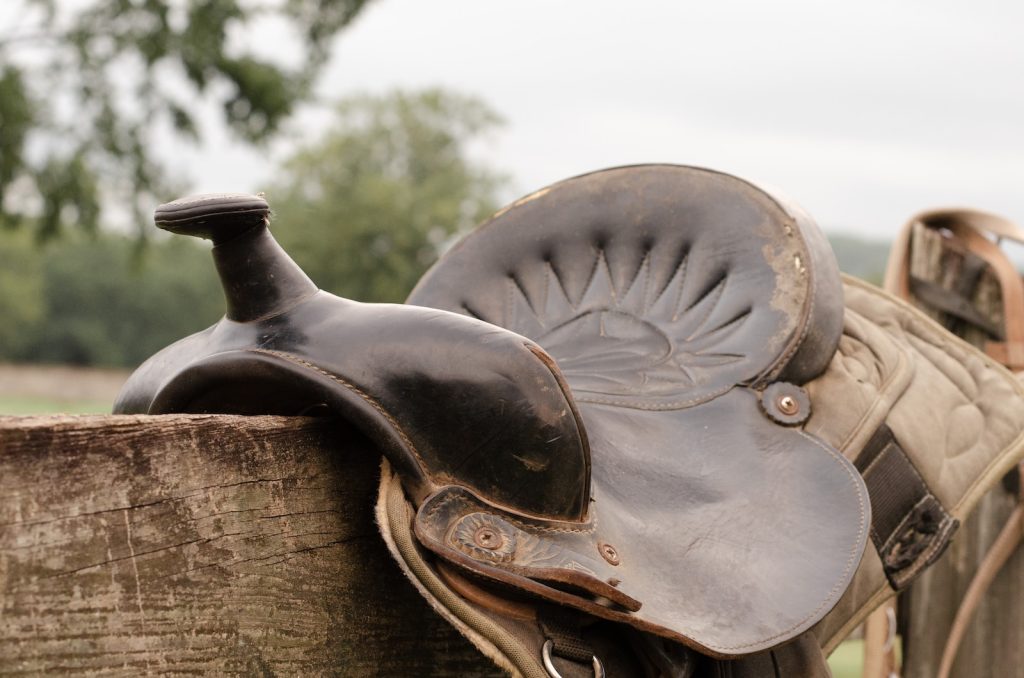Types of Western Saddles
Working Saddles
Working saddles are rugged western saddles and built for ranch work, designed to withstand the demands of activities like cattle roping. Their durability and sturdiness make them ideal for practical tasks.
Roping Saddles
Roping saddles are tailored for roping activities. They feature a reinforced horn and a sturdy build to handle the stresses of roping. The horn is a crucial component for securing the rope during cattle work.
Barrel Racing Saddles
Barrel racing saddles are lightweight and designed for agility. They feature a high cantle and a deep seat, aiding riders in maintaining balance during tight turns.
Trail Riding Saddles
Trail riding saddles prioritize comfort for extended rides. They come with extra padding and attachment options for gear, ensuring a pleasant experience on the trail.
Show Saddles
Show saddles boast intricate designs and decorations, making them a perfect choice for competitions and exhibitions where appearance matters.
Key Components of Western Saddles
Western saddles consist of several key components that contribute to their comfort and functionality:
Saddle Tree
The saddle tree forms the framework of the saddle, dictating its shape and providing support. Choosing the right tree size and shape is essential for rider and horse comfort.
Seat and Cantle
The seat and cantle affect rider comfort. The depth of the seat and the height of the cantle influence the rider’s security and stability in the saddle.
Horn and Swells
The horn serves as an anchor for ropes in roping events, and different styles suit different purposes. Swells provide grip and stability for the rider’s legs.
Stirrups and Fenders
Stirrups and fenders contribute to rider comfort and stability. When it comes to Stirrups, they come in various styles, and fenders, often made of leather, aid in stability and leg positioning.
Materials Used
Western saddles are crafted from different materials, each with unique advantages:
Leather Saddles
Leather saddles are known for their durability and classic appearance. Proper care, including regular cleaning and conditioning, is crucial for maintaining their quality.
Synthetic Saddles
Synthetic saddles are lightweight and weather-resistant. They require less maintenance and are suitable for riders who often encounter wet conditions.
Saddle Fitting and Sizing
Proper saddle fit is essential for both rider and horse comfort:
Importance of Saddle Fit
An ill-fitting saddle can lead to discomfort, pain, and health issues for the horse. Accurate measurements of both rider and horse are necessary for the right fit.
Caring for Western Saddles
Regular maintenance is crucial to preserve the condition of your Western saddle:
Cleaning and Maintenance
Regular cleaning removes dirt, sweat, and grime. Leather saddles require conditioning to prevent drying and cracking. Synthetic saddles should also be cleaned regularly to maintain their condition.
Choosing the Right Saddle
Selecting the appropriate Western saddle depends on your riding style, preferences, and budget:
Considerations
Assess your riding activities and budget when choosing a saddle. Different activities demand specific features from the saddle.
FAQs (Frequently Asked Questions)
- How do I know if my saddle fits properly?
- Explanation of saddle fit indicators.
- Can I use the same saddle for different riding activities?
- Discussion of saddle versatility.
- What’s the difference between leather and synthetic saddles?
- Pros and cons of each material.
- How often should I clean my saddle?
- Guidelines for proper saddle maintenance.
- Do I need a professional to help with saddle fitting?
- Importance of professional assistance in saddle fitting.
Conclusion
In conclusion, Western saddles are vital for ensuring comfort and safety for both riders and horses. Understanding the diverse types, materials, and components of Western saddles empowers you to make informed choices that enhance your riding experience.
